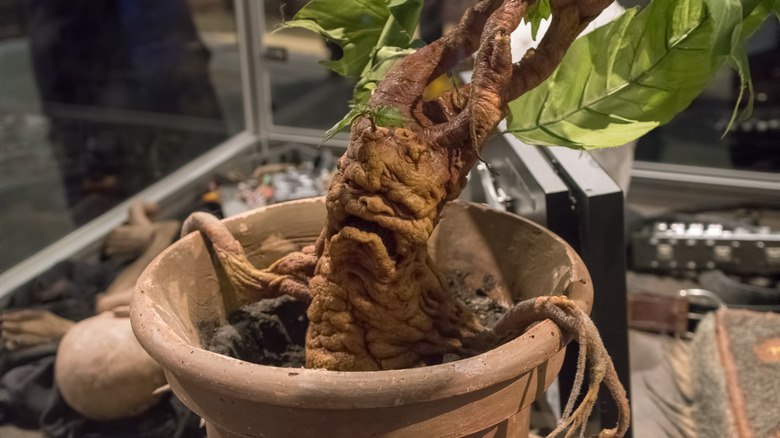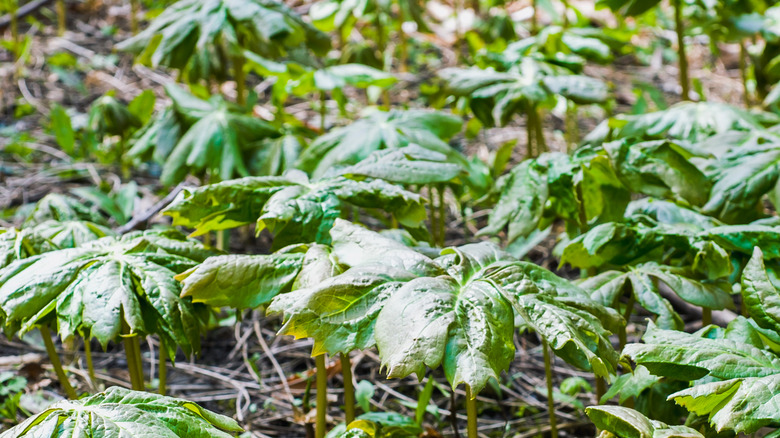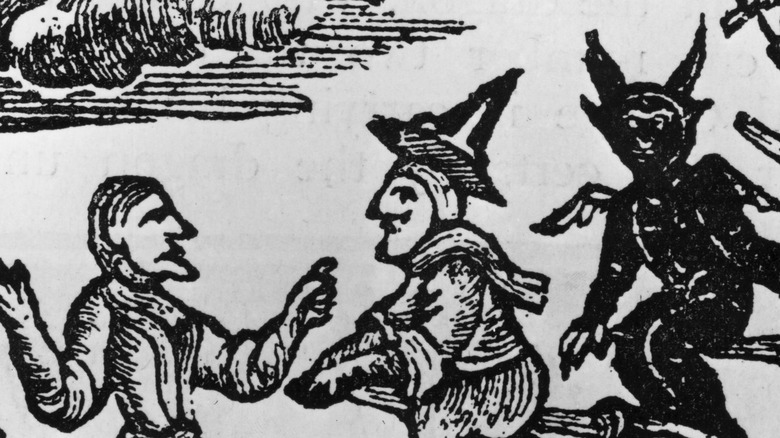The Real Life Plant That Inspired The Mandrakes In Harry Potter
If you've ever read the Harry Potter series, you might remember the scene where Harry, Ron, and Hermione attempt to unearth deadly, screaming, sentient plants from the soil during a herbology class with Professor Sprout.
While much of what happens involving mandrakes in Harry Potter is purely fictional (sorry, anyone who's still waiting on their Hogwarts admission letter!), the shrieking mandrakes of Hogwarts actually have their roots in a very real plant — one that, while not actually sentient, is still potentially deadly, hallucinogenic, and shrouded in mythology and lore.
Real mandrakes, which inspired the Harry Potter plants, are a genus of six hallucinogenic plants in the nightshade family, per Britannica. Visually, they usually consist of a long taproot, orange-colored fruit, and an array of colorful flowers, and they can be found in their native regions of the Mediterranean and the Himalayas, and for thousands of years, these strangely humanoid plants have been used from everything from fertility enhancement to murder.
The history of mandrakes in medicine and magic
In ancient Greece, mandrakes were sometimes used as an anesthetic for surgery. When soaked in vinegar or wine, they were also used as an aphrodisiac — a love potion that could invoke the spirit of the goddess Aphrodite, per Wired.
Ancient Hebrew civilizations also saw the mandrake as a potent and powerful plant and used it as a way to induce pregnancy in women. This belief stems from a reference to mandrakes in the Book of Genesis, which tells of how Rachel used mandrake berries to conceive a child, per Gardening Know How.
This connection between mandrakes and fertility carried over to medieval times, when women who wanted to get pregnant sometimes used to sleep with mandrakes under their pillows. During the Middle Ages, many people also saw mandrakes as good luck charms and carried them around to ward off ill fortune, according to Wired.
The mandrake is also shrouded in a variety of mysterious and macabre legends, including the myth that mandrakes, when pulled up from the ground, could emit a scream so loud it could kill whoever digs it up. According to Atlas Obscura, this myth may have been invented by medieval witches who wanted to discourage people from uprooting the plant, which they often used in potions, charms, and healing concoctions.
The mandrake's associations with hallucinations and death
Mandrakes can also cause hallucinations — which may have been why witches favored it, sometimes even ingesting it before embarking on trips on their broomsticks, according to a legend related by the BBC. It can also cause psychosis and delirium, per Tripsitter, and even death, which is why it should never be used as a recreational drug.
Most of its hypnagogic effects stem from the fact that it contains three alkaloids — hyoscyamine, atropine, and scopolamine — which disrupt the central nervous system and create disorienting effects, per the U.S. Forest Service.
Perhaps the darkest story about mandrakes is the folk belief that mandrakes used to grow from the blood, semen, and fat dripping from people hanged at the gallows. It was also sometimes given to people about to be executed in order to speed up their deaths, per the BBC.
While they may not actually grow from the blood of hanged men, as part of the poisonous deadly nightshade family, mandrakes can indeed cause death when ingested in extremely high quantities. It is believed that a type of mandrake called henbane was used by the murderer Dr. Hawley Crippen when he killed his wife in 1910, per Pubmed.
Today, modern homeopathic and occult practitioners still sometimes use the plant, per Britannica, and the Harry Potter series has certainly helped bring this strange plant back into the mainstream. Due to its deadly qualities, however, it should probably remain firmly in the realm of fiction – unless you have a Professor Sprout to guide you through the process of uprooting it, of course.


